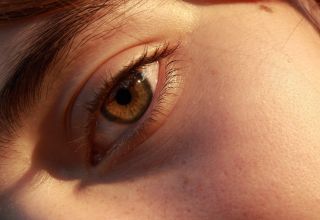Astronomy Photographer of the Year 2023: the amateur astronomers exploring the universe

Since its eagerly awaited launch in December 2021, the James Webb Space Telescope has cast its infrared gaze across the universe, allowing us to see further into the cosmos than ever before. However, it is not only NASA’s premier observatory that is revealing the secrets of the universe.
Enter the Astronomy Photographer of the Year competition, run by Royal Museums Greenwich. As the largest international space photography competition in the world, the exhibition’s images provide an awe-inspiring glimpse into our universe, and the winning photographs from this year’s competition are no exception. Here are a few of our favourites.
Overall and galaxies winner: ‘Andromeda, Unexpected’ by Marcel Drechsler, Xavier Strottner and Yann Sainty
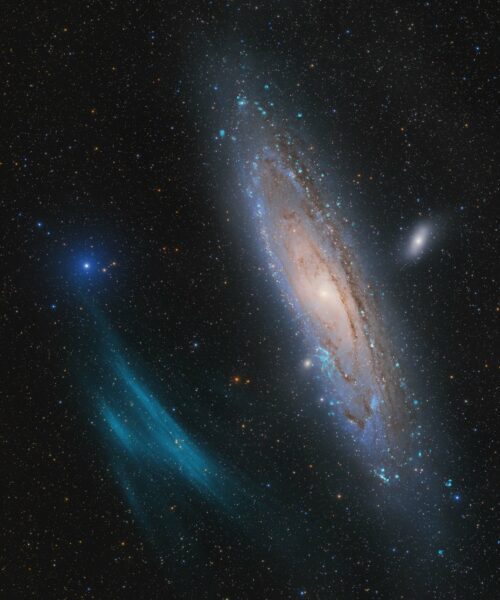
This year’s winning image, ‘Andromeda Unexpected’, shows one of the most photographed parts of the night sky, the spiral galaxy Andromeda. Also called Messier 31 (M31), Andromeda is our closest large galactic neighbour, lying around two million light-years away from the Milky Way. The first photograph of Andromeda was taken by amateur astronomer Isaac Roberts in 1888, using a twin telescope at his home observatory near Liverpool. Since then, the galaxy has been a popular subject for astrophotographers.
The ‘Unexpected’ part of the image is the large plasma arc lying next to the spiral galaxy, appearing as a curved, blue cloud in the lower left corner. The structure is made up of oxygen atoms that have lost their electrons, forming a cloud of ionised gas that emits light. It is thought that this never-before-seen ‘emission nebula’ could be the closest such object to us in the universe and scientists across the globe are now studying the arc discovered by three amateur astronomers, Marcel Drechsler, Xavier Strottner and Yann Sainty.
“This astrophoto is as spectacular as it is valuable. It not only presents Andromeda in a new way, but also raises the quality of astrophotography to a new level.” – Competition judge László Franciscs.
Skyscapes winner: ‘Grand Cosmic Fireworks’ by Angel An
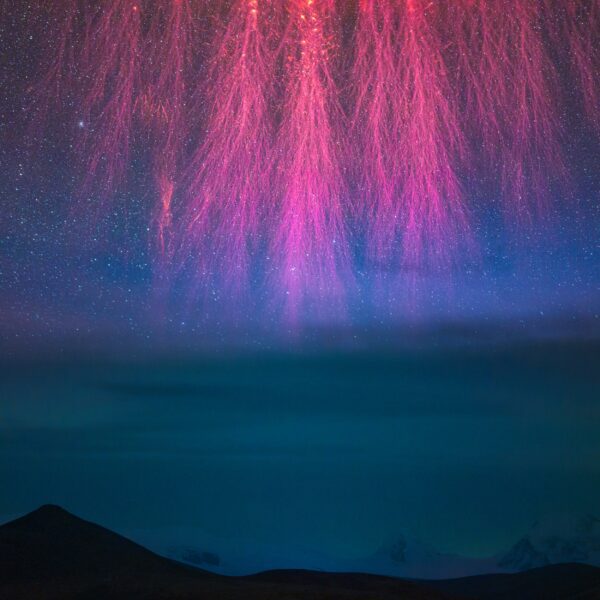
The winner of the skyscapes category, taken on the highest ridge of the Himalayan mountains, features a rare phenomenon: sprites, or red lightning. This strange weather event is caused by the same mechanism as normal lightning: the discharge of electrical charge in clouds. However, unlike regular lightning, sprites do not flash towards the ground but high up into the upper atmosphere. Lasting only a millisecond, sprites are incredibly difficult to observe and photograph, making this extraordinary photo even more impressive.
Stars and nebulae winner: ‘New Class of Galactic Nebulae Around the Star YY Hya’ by Marcel Drechsler
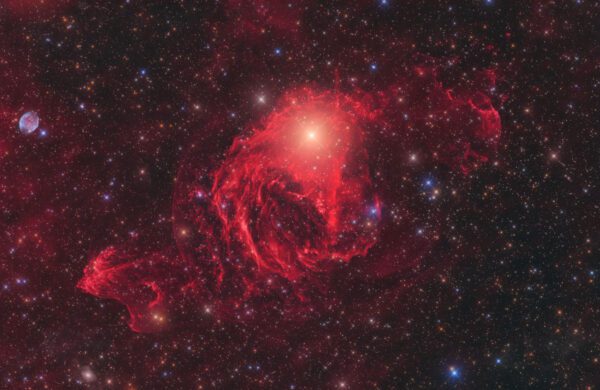
This remarkable image of the YY Hya star revealed a previously unknown galactic nebula that the team of amateur astronomers have named ‘the heart of Hydra‘. Nebulae are giant clouds composed of interstellar gas and dust which emit light, producing colourful displays such as the striking red seen in this image. ‘The heart of Hydra’ surrounds the YY Hya binary star system, a pair of stars that are orbiting each other within a shared envelope of gas. This image of YY Hya and its interstellar environment, a result of over 360 hours of exposure time, has not only provided a dazzling look into space but has also made an important contribution to the study of the evolution of binary star systems.
Our Sun winner: ‘A Sun Question’ by Eduardo Schaberger Poupeau
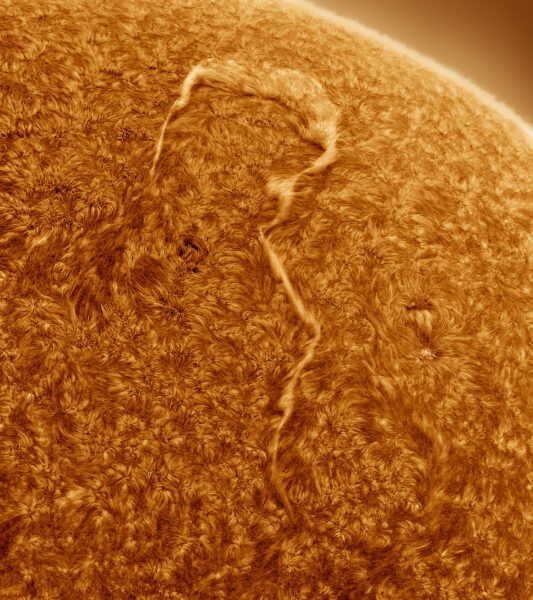
As our most familiar celestial object, the Sun has been photographed millions of times, but never quite like this. A Sun Question shows what appears to be a question mark on the surface of the Sun. This curious structure was produced by solar filaments, long threads of gaseous material that are shaped and anchored to the surface of the Sun by magnetic fields. Commended by competition judge Sheila Kanani for the “paint-like quality” of the image, ‘A Sun Question’ highlights the mysterious and dynamic nature of the star that dominates our solar system.
Our Moon winner: ‘Mars-Set’ by Ethan Chappel

Mars-Set captures one of the most exciting celestial events of 2022, the lunar occultation of Mars. On December 8 2022, Mars lay directly opposite the Sun, an event that occurs roughly every two years, resulting in the red planet appearing at its biggest and brightest. At the same time, the Moon was in opposition to the Sun and thus had reached Full Moon. This rare sight was captured in Mars-Set in incredible detail, showing Mars skimming the southern edge of the Moon, moments before it completely disappeared from sight.
Aurorae winner: ‘Brushstroke’ by Monika Deviat
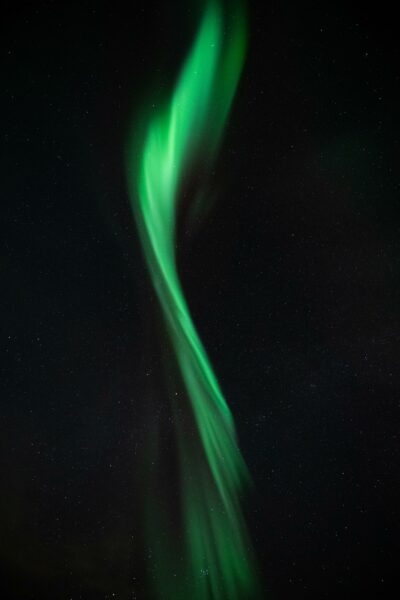
This image of the Northern Lights, or the aurora borealis, flickering high in the Finnish skies, is stunning in its simplicity. As charged particles are ejected from the Sun and enter the Earth’s upper atmosphere, they are diverted towards the poles by our planet’s magnetic fields. There, they interact with the other particles in our atmosphere, producing the captivating display of fluorescent lights. Whilst we’re used to seeing waves of colour across the sky, this astrophoto provides a unique perspective of an atmospheric phenomenon that has captivated humans for millennia. The unusual shape of the green aurora, chosen by the photographer as it “looked like a painter’s brushstroke across a canvas”, shines in isolation against a deep black sky, allowing the audience to fully appreciate the beauty of the Northern lights.
This is just a selection of the incredible images from the Astronomy Photographer of the Year 2023 competition. With 11 different categories, you can see everything from glittering galaxies to brilliant auroras at the special exhibition at the National Maritime Museum.






